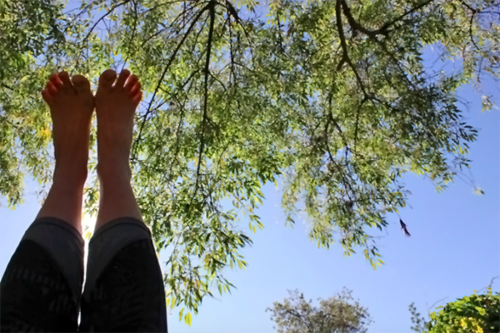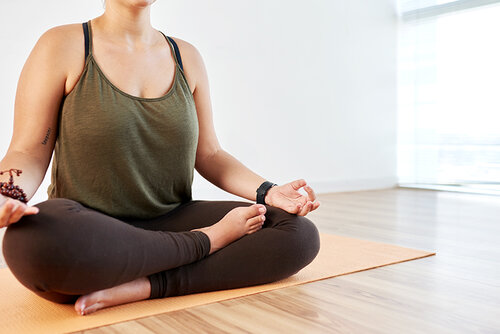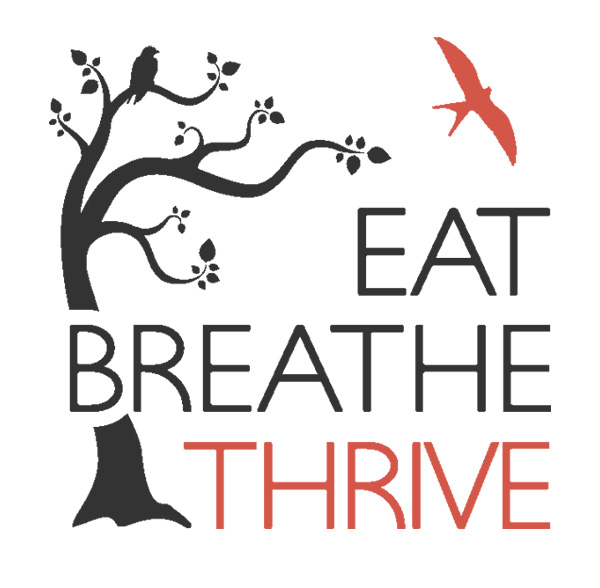How to Bring Body Positivity into your Yoga Practice
On the one hand, yoga can help us foster body acceptance and appreciation—but the same practice can also become a breeding ground for unhelpful comparisons and body dissatisfaction.
In this blog post, Jill Lacasse shares some helpful hints on how to bring body positivity into your yoga practice.

Imagine yourself struggling to maintain your dolphin pose in your favorite yoga class. As you turn your head to the mat beside you, you see the skinny girl next to you effortlessly float up into a forearm stand from her dolphin.
What thoughts come to mind?
Are they thoughts of unworthiness? Of self-doubt? Of jealousy? Of frustration?
When we engage in exercises or practices that are physical in nature, they can bring up feelings of judgment or criticism, especially if we aren’t fully accepting of our imperfections. If we don’t like how our bodies look, we can easily get caught up in the comparison game and create negative stories around what we are supposed to look like… even in our asana practice.
The media has created images of what the “perfect yoga body” looks like; mainstream images typically portray skinny girls in slimming yoga pants and tight sports bras. We may feel the need to measure up to these images — or to the Instagram accounts that show inspiring yet intimidating advanced poses, which our bodies maybe aren’t quite ready for.
Not only can comparing ourselves to others create unrealistic ideals, but it can cause dissatisfaction with our bodies. In turn, this dissatisfaction can spiral into unhealthy thoughts and self-sabotaging behaviors. And that’s not what yoga is about!
Comparing ourselves to others can cause dissatisfaction with our bodies and spiral into unhealthy thoughts and self-sabotaging behaviors. And that's not what yoga is about!

Yoga isn’t only the physical practice, but a holistic system to align with one’s true nature. Asana, or the physical postures of yoga, is only one limb of the eight limbs of yoga. Yoga is also about tuning within, pratyahara, and listening to the body with an open heart and mind. YYoga asks us to practice movement and stillness with a mindset of curiosity and exploration, to allow thoughts to come and go without judgment or criticism. This limb encourages us to refrain from external stimuli and face our habits through observation and self-reflection.
Asana is ultimately practiced to reach a state of deep meditation, stillness of the mind and a feeling of inner peace. And in order to reach this state, we must get out of our heads—which are programmed to look for all the things that need “fixing”—and into our hearts. We need to tune into who we truly are, and recognise how we uniquely embody yoga through the celebration of our bodies, our imperfections, and our progress both on and off the mat.
Yoga asks us to practice movement and stillness with a mindset of curiosity and exploration, to allow thoughts to come and go without judgment or criticism.
Here are some guidelines to help you bring body positivity into your yoga practice:
Ask yourself, how do I feel?
Before beginning asana, sit in easy pose, close your eyes, and quiet the mind. Tune into your body and ask how check in with how your body fels today. Does it want to move slower through today’s practice, perhaps go for some yin—or does it want something active and full of passion and fire?
As you move through your practice, be present with your body and listen to its signals. Pushing to your edge might be what you need, but be aware to not push beyond your limits. Stay present, remain conscious of how you feel, refrain from judging your feelings, and allow thoughts of criticism and self-doubt to dissolve.
Appreciate your body for what it can do.
As you move through your practice, pay attention to your body’s functionality. Celebrate the experiences which are possible to you as an embodied being—physical qualities, such as flexibility and strength, as well as the cognitive, social, and emotional effects of your practice.
Focus inwards.
If you practice in a space which has mirrors, keep your gaze inwards; focus on your experience (rather than the form) of postures. Perhaps challenge yourself to practice with your eyes closed—and notice how this affects your posture, balance, thoughts, and feelings.
Set an intention.
Identify an intention for your practice. Consider, why are you coming to your mat? How can you maintain your intention—how can you embody self-love, gratitude, and compassion—throughout your practice? Keep returning to your intention during your practice.
Use positive affirmations.
Take some time to journal and write down statements of self-love. These statements can range from “I love all my imperfections,” to “I am worthy of love and joy.” As you move through your practice, if you notice negative statements about your body or yourself bubbling to the surface, repeat your affirmations internally. Aim to cultivate an attitude of love and acceptance.
Notice the effects of your practice.
Be aware of all the benefits of yoga—beyond the postures. You might notice clarity of mind, a steadiness of focus, more presence in your conversations and activities, a growing sense of spirituality, an increase in your energy and vitality.
Most of all, keep your attention with and celebrate your body for what it does, rather than what it looks like. My experience has been that, as you move with awareness and intention, you care less about what you look like, and more about how you can create love, abundance, and joy into your life.

About The Author
Jill Lacasse is a health enthusiast passionate about holistic living through being conscious of the mind, body and spirit connection. Her love for health and wellness blossomed through her degree in Kinesiology, her research in social media and body image and teaching fitness classes. She completed a two month yoga internship in Hawaii and that was where she fell in love with travel and all things yoga - and knew it was her calling in life to share the ancient and healing practice.
Jill is a free-spirited yoga teacher, harpist, and sound healer, who loves to bring bhakti, reflection, and fun into every space she holds. She has taught in Peru, Guatemala, Canada and now in California, as she continues her yogi education through the path of Ayurveda. She finds balance and inspiration in her happy place of being in nature with instrument in hand, mantra in mind and surrounded by community. Her bold and bright spirit leads the way in helping shape her simple, community-based and nomadic life where she can inspire, teach and motivate others to live with mindfulness and purpose.
![]()
![]()




This Valentine’s Day, use a yogic approach to express love! Read on to learn more about ahimsa, and how it relates to showing yourself love.